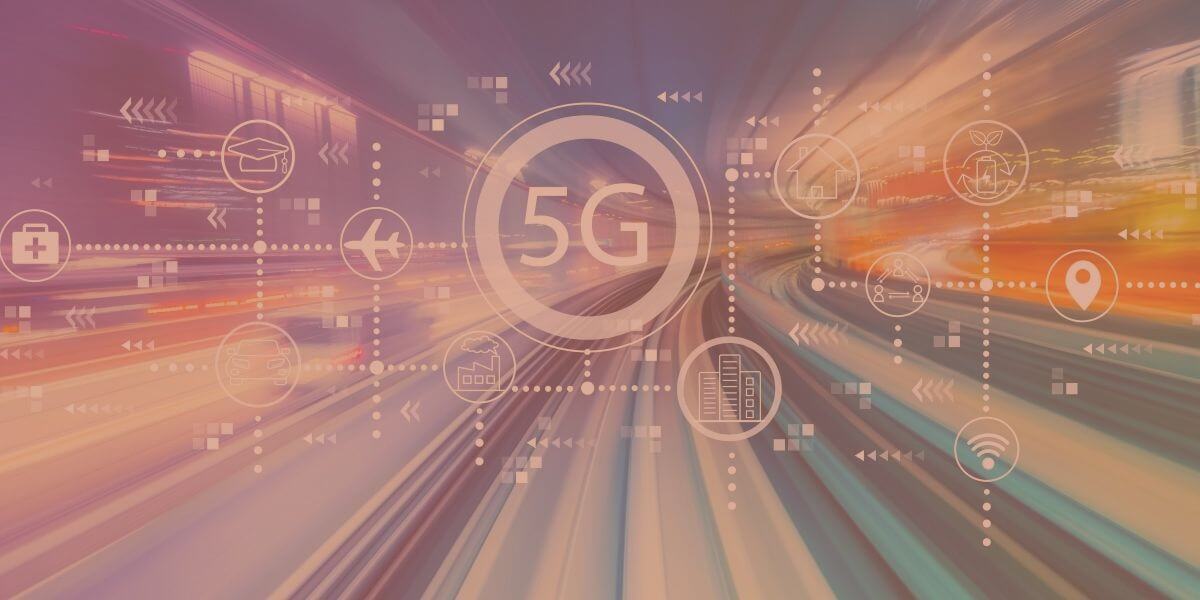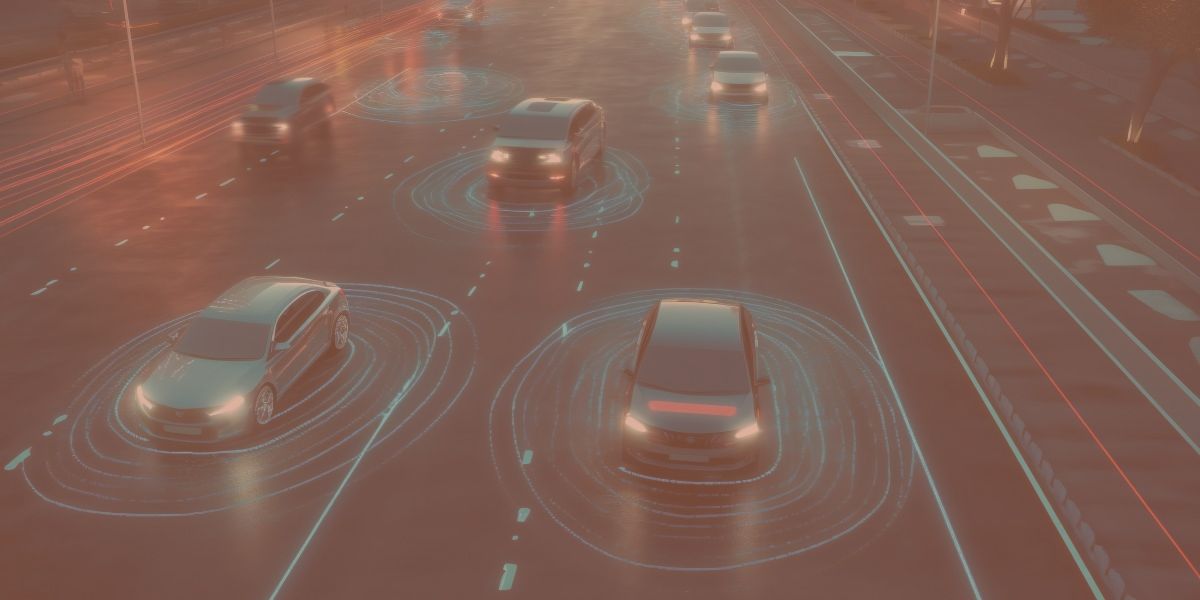Lower your internet bill
61% of people overpay for their internet.
Are you one of them?
Unlock exclusive offers in your area!
Call now
[tel]Enter zip code
1 Star is Poor & 5 Stars is Excellent.
* Required

Written by Rosslyn Elliott - Pub. Dec 19, 2023 / Updated Mar 18, 2024
Table of Contents
Are you happy with your Internet service?

About the author
We’ve come a long way from the days of flip phones. We used our cell phones mostly for voice calls and text messages through most of the first decade of the 21st century.
Today, blazing fast wireless 5G networks are rolling out across the world. 5G delivers speeds up to 100 times faster than previous mobile technologies. We can now do anything on our smart phones that we can do on our wired home internet connection.
How did we actually get here? What changed between 3G, 4G and now 5G wireless networks? Let’s break it down step-by-step to explore the differences between mobile network generations.
It took 40 years to move from the first generation of cell phone technology to the fifth generation. 1G became available in the early 1980s. We’ll start our history halfway through the timeline with 3G, the “third generation” of mobile networking.
| Mobile Network Generation | Year of Debut |
| 3G | 2001 |
| 4G | 2009 |
| 5G | 2019 |
| 6G | 2030 |
3G refers to the third major phase of mobile telecom standards. 3G networks first launched commercially in the early 2000s, allowing people to make phone calls and access mobile data on-the-go for the first time.
3G provided a major speed boost over previous 2G networks. It offered peak speeds up to 2Mbps, enabling basic web browsing and services like email on mobile devices. Video calling also became possible on 3G, though it was quite choppy and unreliable back then.

Remember 3G?
Some of the most important 3G features and upgrades over 2G networks include:
The jump from dial-up era 2G to 3G felt revolutionary, even if it seems basic by today’s standards. 3G paved the way for today’s mobile-first world.
4G improved vastly on early 3G networks, ramping up speeds and performance. The first 4G networks emerged around 2010, relying on newer mobile broadband technologies. In ideal conditions, peak 4G speeds clock in at over 100 Mbps download. In real life, speeds often vary from 10-100 Mbps download.
4G made it possible to use bandwidth-intensive mobile apps and services, from streaming HD video to multiplayer gaming. 4G was a huge upgrade that ushered in our hyper-connected lifestyles.
Compared to aging 3G networks, 4G upgrades include:
While 4G performance can vary greatly depending on congestion and signal strength, it leaves 3G in the dust in nearly every meaningful way. Even the shift from 3G to basic 4G felt game-changing, with mobile apps and streaming finally working smoothly.

5G builds on 4G foundations with extreme speed, responsiveness, and connection density. 5G networks are just beginning to launch globally, utilizing new radio technologies and infrastructure upgrades. Peak 5G download speeds can exceed 1 Gbps, with average real-world speeds 200-400 Mbps.
5G doesn’t just crank up the bandwidth and performance though – it reimagines mobile networks with versatility in mind. The combination of extreme speed and low latency unlocks new mobile use cases like cloud gaming, industrial automation, autonomous vehicles and more.
How exactly does freshly rolled-out 5G improve on 4G networks? Here are some of the key upgrades and differences:
5G enables new types of digital experiences never before possible, while supporting exponentially more connected smart devices.

Fast downloads on 5G
Now that we’ve covered 3G vs 4G vs 5G individually, let’s directly compare metrics across generations:
| Peak Download Speeds by Mobile Generation | |
| 3G | 2 Mbps |
| 4G | 100 Mbps |
| 5G | 1 Gbps |
| 6G (goal) | 1 Tbps |
One of the biggest differences is raw speed. Peak 3G speeds clock in around 2Mbps. Speeds for 4G can reach over 100Mbps in ideal conditions. Peak speeds for 5G max out at an astonishing 1 Gbps, with average speeds over 200Mbps. Projected future speeds for 6G go as high as 1 Tbps (terabit per second).
Real-world speeds depend heavily on signal, distance to cell tower, and how many users are sharing bandwidth. But the difference between mobile network generations is significant even under real-world conditions. Download a movie on 3G? Forget about it. Streaming 4K video? No sweat on many 5G connections.
The maximum number of devices able to simultaneously connect within a square kilometer continues to increase in each generation as well. 3G allows hundreds of devices, 4G supports about 100,000.
But 5G enables massive IoT deployments of a million-plus devices per square kilometer. The future 6G will support over ten million devices per square kilometer.
| Bandwidth to Support Multiple Devices in 1 Square Km | |
| 3G | < 1000 devices |
| 4G | 100,000 devices |
| 5G | 1 million devices |
| 6G (goal) | 10 million devices |
Rural coverage also keeps improving, extending connectivity with newer equipment and wider spectrum bands.

How many devices?
Network latency refers to lag or delay sending packets between devices. Slow latency ruins real-time experiences like video calls and gaming.
While 3G latency falls between 100-200ms typically, 4G drops to around 30-60ms. The 5G target is blisteringly fast – under 10ms, unnoticeable to humans.
| Latency (Lag) in Mobile Networks | |
| 3G | 100-200 milliseconds |
| 4G | 30-60 milliseconds |
| 5G | < 10 milliseconds |
| 6G (goal) | 1 microsecond |
Reliability of network signals also continues to improve through sophisticated antennas and intelligent traffic-shaping techniques.
Evolving from 3G to 5G impacts more than just speed benchmarks. These technological advances transform experiences across users and industries.
For everyday smartphone owners, the jump from 3G to 5G means apps load faster. Streaming HD video just works, social feeds update instantly, and latency-sensitive mobile gaming feels tighter than ever.
Autonomous systems also start to seem more reliable. For example, self-driving cars can constantly receive sensor data and adjust for it.
Beyond consumer perks, 5G could support futuristic industry use cases. Key examples include:
The ultra-low latency and rock-solid reliability of 5G combines with extreme bandwidth. With this powerful new technology, things that seemed impossible ten years ago will be common.

Self-driving cars
While 5G brings impressive capabilities, the successive rollouts of mobile generations leave us with challenges to solve.
As 3G networks sunset, coverage gaps emerge that leave some rural users behind without internet choices. Those gaps create a digital divide between internet-haves and have-nots. Performance also tends to suffer congestion in denser urban environments.
A key 4G limitation occurs when users get spotty coverage and unreliable performance. Coverage issues are more common while indoors or traveling across challenging terrain. Rural users often still lack access altogether. Congestion also creeps up in crowded environments.
The main 5G challenges center around infrastructure rollout. Tower density remains limited, and home/office penetration is still developing. Flaky in-building reliability will persist until more small access points get deployed everywhere. There’s also work remaining to bridge 5G with Wi-Fi networks smoothly.
What does the future look like for mobile networks when we look past 5G deployment?
5G will continue to evolve and improve as companies refine 5G technologies.
Next-generation 6G research has already kicked off too, exploring radical concepts such as terahertz-band communications to allow sci-fi-esque hologram calls.
Here are two key trends expected in the coming years:
Gradual Nationwide 5G Buildout – Coverage will continue to improve as infrastructure rolls out. Rural users will benefit in areas that have been hard to reach with wired internet.
Integration With Edge Computing – Coupling 5G and edge computing should enable even lower-latency use cases, as processing moves closer to end users physically.

Hologram calls with 6G
From humble 1G beginnings supporting only voice calls, mobile connectivity has exploded into a technology that supports every aspect of daily life.
5G provides a transformational platform to take speed, responsiveness and versatility to radical new levels.
One of the most important potential uses of 5G is to provide fixed wireless connections for home internet. A fixed wireless antenna that always keeps the same position relative to a tower can often get better signal strength than a mobile cell phone.
Right now, some people try to use mobile hotspots to set up a home Wi-Fi connection. But results aren’t fast, and data limits can get in the way.
Fixed wireless connections maximize the chances that 5G will be able to perform near its ideal fast speeds for internet browsing. For rural customers without wired internet access, this may be an improvement over their current satellite internet options. If fixed wireless connections improve enough, more rural users will be able to work remote jobs.
The future promises even more innovations. 5G and 6G will let us connect every process around us to mobile networks.
Buckle up as more “smart” devices and systems surround humans – from cars, to homes, to entire cities. Over the next ten years, AI and superfast mobile technology are likely to change our daily lives in ways we can hardly imagine now.
Will we enjoy the huge changes to our lifestyles? Or will we lose all privacy in the rush of the digital world with 5G and Wi-Fi everywhere? We’ll find out soon enough!
Need a Faster Internet Provider?
If you are seeking a new internet provider, check out some of your internet options in this guide to cable alternatives, or enter your zip code to see providers in your area.

About the author
Congratulations, you qualify for deals on internet plans.
Speak with our specialists to access all local discounts and limited time offers in your area.
[tel]61% of people overpay for their internet.
Are you one of them?
Unlock exclusive offers in your area!
Call now
[tel]Enter zip code